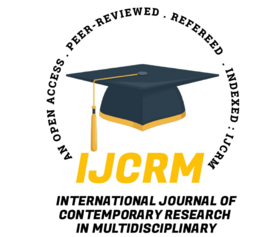International Journal of Contemporary Research In Multidisciplinary, 2025;4(3):97-103
Integrated Bio-Ecological Methods for Soil and Water Remediation: A Comprehensive Systematic Review
Author Name: ShreeRam Behera; Dr. Pradipta Kumar Pati;
Paper Type: review paper
Article Information
Abstract:
Heavy metal and organic pollutants as well as agricultural and industrial contaminants, have caused worldwide soil and water contamination problems that need sustainable treatment approaches. In this review, we investigate bio-ecological remediation technologies with a special focus on the processes, integrated applications, and novel developments. They include phytoremediation, microbial Mycoremediation, Vermiremediation, rhizoremediation, and constructed wetlands, which provide means for contaminant stabilization, degradation, and removal. Transgenic and hyperaccumulator plants have developed phytoremediation techniques such as phytoextraction, Phytostabilization, and phytodegradation. Enzymatic and metabolic flexibility by microbial and fungal systems to break down hydrocarbons, pesticides, and industrial compounds is improved by bioaugmentation or biosorptive techniques. Vermiremediation enhances soil aeration and microbial activity, as do constructed wetlands and rhizosphere-engineered systems for the scalable wastewater treatment and nutrient reclamation.
These techniques have been improved in recent years. Combined use of nanoparticles, bio-nano hybrids, genetically modified organisms, and biosensors has created specific and effective remediation networks. Integration of AI and IoT solutions makes it possible to monitor and adjust the remediation conditions in real-time. Although bio-ecological treatments provide several advantages, namely low energy requirement, environmental compatibility, and ecosystem restoration potential, drawbacks such as climate dependence, low rates of degradation, and regulatory issues can be identified. The development of integrated remediation processes using biotechnological and digital tools is a promising opportunity for environmental practices. This review underscores the inter-disciplinary roles of biological, ecological, nanotechnological, and environmental engineering aspects in achieving sustainable remediation of soil and water contaminated with these organisms.
Keywords:
Bio-ecological remediation, Phytoremediation, Microbial remediation, Constructed wetlands, Environmental biotechnology, Sustainable pollution control
How to Cite this Article:
ShreeRam Behera,Dr. Pradipta Kumar Pati. Integrated Bio-Ecological Methods for Soil and Water Remediation: A Comprehensive Systematic Review. International Journal of Contemporary Research in Multidisciplinary. 2025: 4(3):97-103
Download PDF





